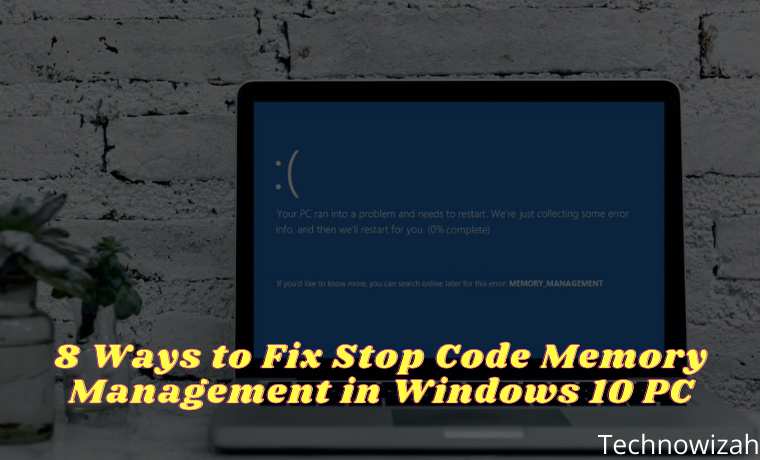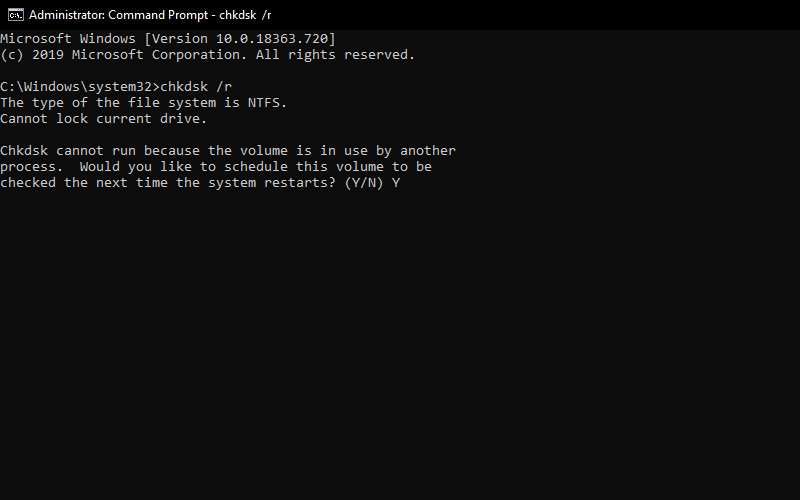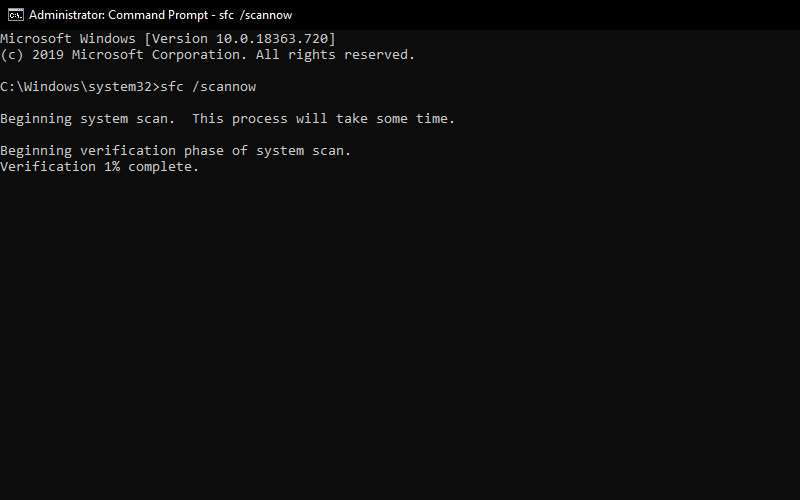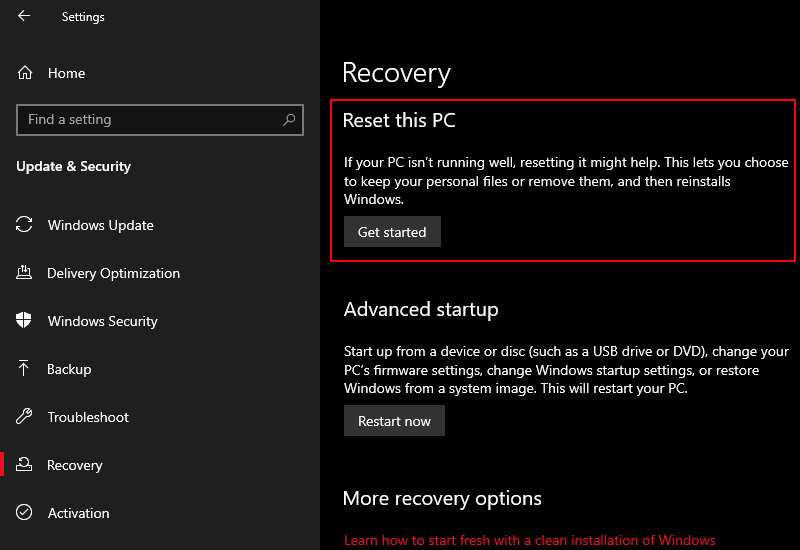8 Ways to Fix Stop Code Memory Management in Windows – Windows 10 often pops up error messages and stops the code when something goes wrong. When a blue screen of death ( BSOD ) error occurs, you can use the Windows stop code to determine and fix the problem.

How to Fix Stop Code Memory Management in Windows 10 PC Laptop 2024
But sometimes, the stop code matters for more specific errors. On the other hand, you may have to work through various Windows 10 fixes. The Windows 10 “Memory Management” stop code involves the latter. In this article, the admin will help you overcome your memory management errors.
Read more:
- 6 Ways to Fix PAGE_FAULT_IN_NONPAGED_AREA in Windows 10
- 8 Ways to Fix Steam Can’t Open on Windows 10 PC
- 6 Ways to Fix Destination Folder Access Denied Windows 10 PC
- 6 Ways to Fix Error Code 0xc0000e in Windows 10 PC
What is Windows Memory Management?
Memory management is very important to keep your operating system running properly. Memory management is a function that manages your system memory. Properly functioning memory management is essential to the health of your system. When a memory management error occurs, your system will start displaying a BSOD periodically.
The reason is that memory management keeps track of every memory location on your system, regardless of its state. It manages memory and processes transitions between your RAM and physical memory during execution, deciding how much memory to allocate (and how much is available for allocation). When you close a program, it will either allocate that memory to another processor or mark it as available for use.
Unfortunately, memory management is not free from system errors, just like other systems. And when it crashes, it takes your system with it.
Memory Management Blue Screen Error in Windows
Simply put, a memory management BSOD means there is a critical memory management error. There are several causes of memory management errors that often occur:
- Wrong RAM
- Problems with new hardware, such as graphics cards
- Incompatible drivers
- Software problems, including corrupt system and operating system files
- Disk error
At times, your system might recover with a simple reset. If you encounter a Memory Management BSOD, restart your system and see if the error returns. If not, there’s a chance it was only once. So how do you guys fix it? Here are some things you can try.
#1. Update Windows 10
The first thing to do is to check if Windows 10 is using the latest version. Outdated system files can cause unexpected errors. Checking for pending updates is a quick and easy way to find out if that’s what’s causing the problem on your computer.
Press the Windows key + I to open the Settings panel. Now, go to Update & Security, then check under Windows Update for any pending updates. If there is an update, save any important files, then hit Restart now. Your system will reboot during the process.
#2. Run Windows 10 Memory Diagnostic Tool
You can use the integrated Windows Memory Diagnostic utility to check if your system RAM is working properly. Memory diagnostic tool runs after system restart. It checks your system memory for errors and records the scan to a text file for analysis.
Type Windows Memory Diagnostic in your Start menu search bar and select the most suitable one. You have two options: reboot immediately and run the utility, or set the utility to run after the next reboot. When you try to fix your memory management BSOD, save all important documents and reboot your system immediately. Windows Memory Diagnostic runs immediately after reboot.
The log files, however, are not visible once you boot back into Windows 10. Press the Windows key + X and select Event Viewer from the power menu. Then select Event Viewer (Local) > Windows Logs > System. Then, in the right column select Find and type MemoryDiagnostic into the box. Hit Find Next. Your diagnostic results will be displayed at the bottom of the window. From there, you need to investigate any specific errors that Windows Memory Diagnostic reports.
#3. Run MemTest86
When Windows Memory Diagnostic shows no error. But you are sure the problem is related to your system RAM. If so, you can use MemTest86 to perform an in-depth memory test. MemTest86 is a free memory testing tool for x86 machines.
You can boot MemTest86 from a USB flash drive (or bootable disk) and leave it to check your system RAM. Now, the MemTest86 RAM check takes a long time to complete, a single test can take hours depending on the amount of RAM you have installed.
#4. Update Your Drivers
Another quick and practical potential fix is to update your system drivers. New software or hardware may come with new drivers, and your system may not receive the message.
Press Windows Key + I to open the Settings panel, then select Update & Security > View update history. You can find driver updates here. Now, type the device manager in the Start menu search bar and select the most suitable one. Go to the bottom of the list and check the error symbol. If it’s not there, your driver status is probably not the source of the problem.
Note: To make it faster and more practical you can use a third-party tool to update all your system drivers at the same time.
But the common thing that causes Memory Management BSOD problems is that sometimes, outdated or new GPU drivers can cause a BSOD. Check your GPU drivers again and provide the latest updates.
#5. Run CHKDSK

CHKDSK is a Windows system tool that verifies the file system with certain settings has a lot of good features and fixes problems while running. You can run CHKDSK from the Command Prompt.
Type in the command prompt in your Start menu search bar, then right-click the most suitable one and select Run as administrator. (Alternatively, press the Windows key + X, then select Command Prompt (Admin) from the menu).
Next, type chkdsk /r and press Enter. This command will scan your system for errors and fix any issues along the way.
#6. Run SFC

If the Memory Management error still occur? System File Check is another Windows system tool that checks for missing and corrupted Windows system files. It sounds like CHKDSK but SFC checks Windows system files specifically, while CHKDSK scans your entire drive for errors.
But before running the SFC command, it is best to double-check if it works. DISM stands for Deployment Image Service and Management. DISM is an integrated Windows utility with multiple functions. In this case, the DISM Restorehealth command ensures that your next repair will work fine. Perform the following steps.
- Type Command Prompt (Admin) in the Start menu search bar, then right-click and select Run as administrator to open a Command Prompt with higher privileges.
- Type the following command and press Enter: DISM /Online /Cleanup-Image /restorehealth
- Wait for the command to complete. The process can take up to 20 minutes depending on the health of your system. The process seems to crash at times, but wait for it to finish.
- When the process is complete, type sfc /scannow and press Enter.
#7. Check Physical Hardware
This is no less important than physically checking your system hardware. Have you moved your system recently? There is a small chance that your hardware was not installed during the process. Maybe it’s just a small chance, but it’s worth a try!
#8. Reset Windows 10 (Last Choice)

Sometimes no other way than resetting Windows 10 will fix your problem. Reset Windows 10 replaces your system files with a completely new set of files and will instantly remove any problems related to Memory Management errors while keeping most of your important files intact.
Go to Settings > Update & Security > Recovery, then under Reset, this PC select Get Started. Your system will restart as soon as you press the button, so make sure you back up important files beforehand. Your system will restart, then you can choose to Keep my files or Remove everything.
Read more:
- 7 Ways to Fix Dxgkrnl Video Fatal Error on Windows 10 PC
- 9 Ways to Fix Critical Process Died in Windows 10 PC
- 6 Ways to Fix Error 0x80070091 in Windows 10 Laptop PC
Conclusion:
If the Memory Management BSOD error is difficult to resolve. Many things can cause Memory Management errors. However, any of the above fixes will bring your system back to normal so you can continue your work and be free of any BSOD for now.
Don’t forget to bookmark and always visit Technowizah.com every day because you can find here the latest Tech Computer Android games How-to Guide Tips&Tricks Software Review etc, Which we update every day.











![10+ Ways To Take Screenshot on Asus Laptop Windows 10 [2024] How To Take Screenshot on Laptop and PC Windows](https://technowizah.com/wp-content/uploads/2020/06/How-To-Take-Screenshot-on-Laptop-and-PC-Windows-100x70.jpg)
